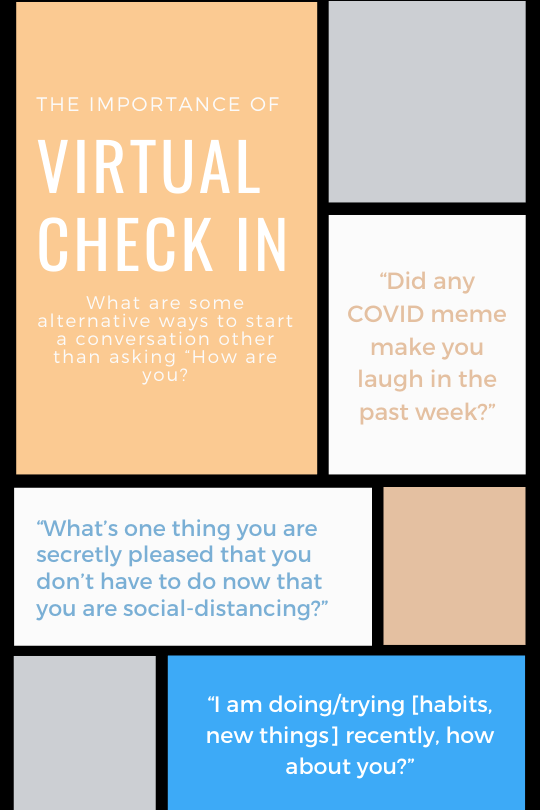By Communication Consultant Lili Tang (Accounting and BIS, ’22)
 Connecting authentically with our friends and colleagues is an important part of building and sustaining relationships. Because we are often unable to meet in person during the pandemic, talking through screens may be our primary way of keeping in touch. But we need to think critically about our approach to these conversations if we want them to be truly authentic.
Connecting authentically with our friends and colleagues is an important part of building and sustaining relationships. Because we are often unable to meet in person during the pandemic, talking through screens may be our primary way of keeping in touch. But we need to think critically about our approach to these conversations if we want them to be truly authentic.
Many of our virtual conversations kick off with “Hi!” followed by a question out-of-habit: “How are you doing?” Unsurprisingly, people often reply, “I’m doing great.” But are friends and colleagues really “doing great”? Are they thriving in today’s virtual environment? Not being in the same place can create an intangible wall between us and our conversation partners, blocking our real emotions and thoughts. Behind the “doing great” response may be loneliness, frustration, or anxiety. We and our conversation partners can open up our thoughts and emotions more readily if we avoid the “doing great” script in favor of sharing our authentic, specific experiences.
A good way to break down that intangible wall is having a virtual check-in. If done well, a virtual check-in not only helps everyone’s voice to be heard, but also builds stronger relationships. What are some alternative ways to start a conversation other than asking “How are you?” How can we better cope with the current situation and conduct an effective virtual check-in?
To start, we should gauge the “temperature of the room.” For instance, if you are with a friend or a family member, ask about their recent activities and feelings, keeping things casual and encouraging self-care. If you are in a more professional or less familiar group, it might be useful to give a brief introduction of yourself in which you describe what you have been doing in the past week and how you have been feeling. Then pass it on to other members to engage in conversation. You could also encourage texting via the chat function as another way of conducting introductions.
Once you understand a bit about how your conversation partners are feeling at the moment, ask (and share your own answers to) some questions that are relevant to a particular audience or topic:
- “What are you grateful for today?”
- “What’s been on your mind lately?”
- “Did any COVID meme make you laugh in the past week?”
- “What’s one thing you are secretly pleased that you don’t have to do now that you are social-distancing?”
- “I am doing/trying [habits, new things] recently, how about you?”
Meanwhile, be aware that non-verbal responses are an important part of the virtual check-in. While actively and patiently listening to your conversation partners’ thoughts, keep constant eye contact by looking at the camera and smile and/or nod to acknowledge the speaker. Keep in mind that sincerity is always powerful in communication.
Though most of the time we are physically “trapped” due to the pandemic, our emotions ought not to be stuck in limbo. Checking in can set the tone for an online conversation so that everyone involved can feel validated for their unique experiences and feelings.
If you have any questions or need any help regarding virtual communication–or if you just need to check in with someone–connect with us by scheduling an appointment or sending an email. Start a great virtual check-in today!
Get information and resources about our center at The Philip Rauch Center for Business Communication.
